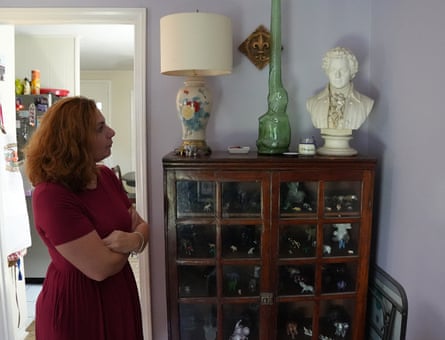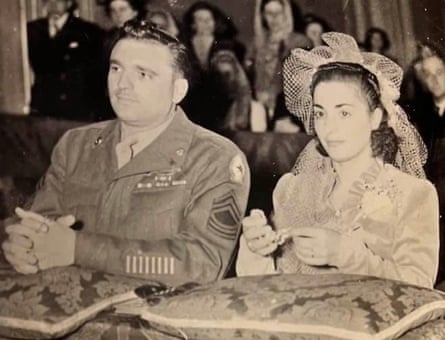The ancient Roman grave marker recently found in the back yard of a New Orleans home had evidently been inherited and left there by the granddaughter of a US soldier who fought in Italy during the second world war.
In statements that all but solved an international historical mystery, Erin Scott O’Brien told two local media outlets that her grandfather, Charles Paddock Jr, kept the 1,900-year-old artifact in a display case at his home in New Orleans’ Gentilly neighborhood before his death in 1986.
O’Brien said to Guardian reporting partner WWL Louisiana and the New Orleans magazine Preservation in Print she was not sure exactly how Paddock ended up with something reported missing from an Italian museum near Rome that lost most of its collection amid second world war bombing. But Paddock served in Italy with the US army during the war, married his wife Adele there, and returned to New Orleans to pursue a career as a musical voice teacher, O’Brien recounted.
It was also not uncommon for soldiers who fought in Europe during the second world to come home with souvenirs.

In any event, what O’Brien initially thought was a nondescript marble tablet ended up being passed down to her after Paddock’s death, and she placed it down as a garden decoration in the back yard of a home she bought in the city’s Carrollton area in 2003. O’Brien forgot to take the stone with her when she sold the house in 2018 to a couple who found the object in March while clearing away undergrowth.
“I just thought it was a piece of art,” O’Brien said. “I had no idea it was a 2,000-year-old … relic.”
The couple – anthropologist Daniella Santoro of Tulane University and her husband, Aaron Lorenz – realized the object had an inscription in Latin. They consulted academics who determined the object was a headstone dedicated to a circa second-century Roman sailor and military member named Sextus Congenius Verus.
Furthermore, the group learned, the headstone matched the description of one reported missing from the city museum of Civitavecchia, Italy, near where it had originally been found, as one of the consulting academics – University of New Orleans archaeologist D Ryan Gray – wrote in a Preservation in Print column published online Monday.
Santoro and Lorenz have since turned the headstone over to the FBI’s art crime team, and efforts to repatriate the artifact to the Civitavecchia museum are under way so that facility can properly display it.

O’Brien, who resides in the New Orleans suburb of Metairie, said she thought about her grandfather’s strange stone again after Gray’s column had received coverage from the international news media, including the Guardian and WWL. She said she contacted WWL after a phone call on Thursday morning from her ex-husband, who told her that he had seen a news story about the object that her grandfather had once possessed – and that it actually turned out to be a piece from one of the world’s great classical civilizations.
“We were in shock about it,” O’Brien said. “It’s just unbelievable how this came about.”
Gray, meanwhile, said it was a relief to learn how Congenius Verus’s gravestone made its way behind a home more than 5,400 miles away from Civitavecchia.
“I was really thinking we’d have our list of possible people through whom it could have ended up here,” Gray said. “I didn’t really expect to actually find the actual person – so it’s pretty exciting to know how it ended up here.”

 German (DE)
German (DE)  English (US)
English (US)  Spanish (ES)
Spanish (ES)  French (FR)
French (FR)  Hindi (IN)
Hindi (IN)  Italian (IT)
Italian (IT)  Russian (RU)
Russian (RU)  7 hours ago
7 hours ago
























Comments